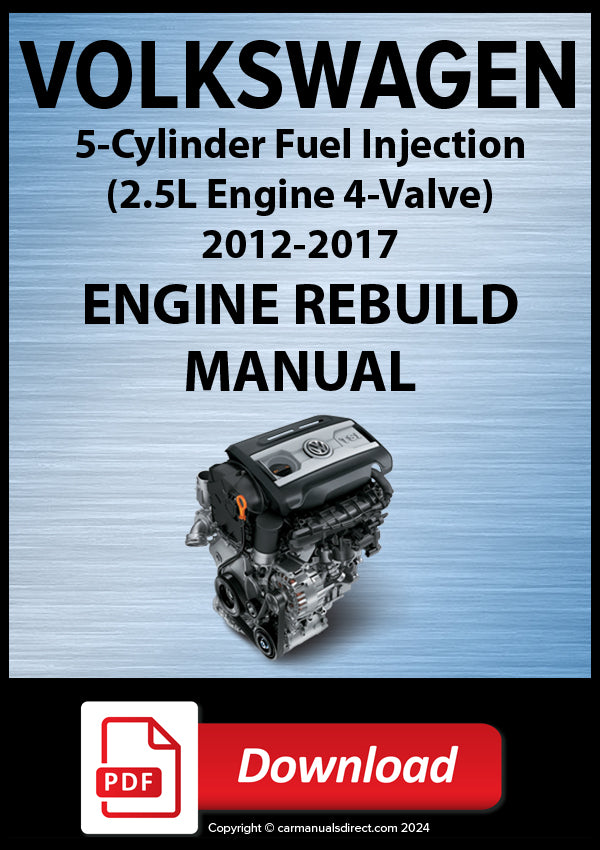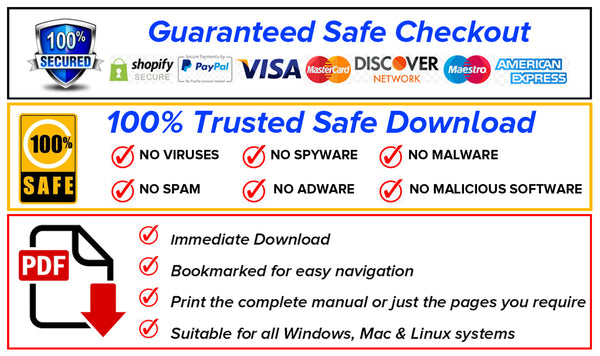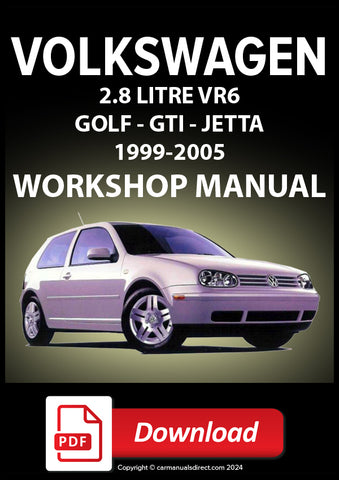
VOLKSWAGEN Beetle 2012-2017 5-Cylinder 2.5L Engine Rebuild Manual | PDF Download
VOLKSWAGEN Beetle 2012-2017 5-Cylinder 2.5L Engine Rebuild Manual: A Comprehensive Guide
The Volkswagen Beetle, particularly the models produced between 2012 and 2017, often utilized a robust 5-cylinder, 2.5L, 4-valve fuel injection engine. This engine, while generally reliable, may eventually require significant maintenance or a complete rebuild. This serves as a guide to the key aspects of rebuilding this engine, covering everything from identification and general information to specific procedures for various components.
Identification and General Information
Before embarking on a rebuild, it's crucial to accurately identify the engine. The engine number and specifications are typically located on the engine block itself. Access to the technical data specific to this engine is paramount. This includes torque specifications, clearances, and other critical measurements required for a successful rebuild. General information, such as recommended lubricants and sealant types, is also essential.
Engine Disassembly and Component Overview
The engine rebuild process begins with removing the engine from the vehicle. This involves disconnecting all necessary hoses, wiring, and linkages. Subsequently, the engine can be disassembled. Here's a breakdown of key components and procedures:
- Engine Mount and Cover: Removing the engine cover and engine mounts provides access to the engine's core components.
- Cylinder Block and Crankshaft: The cylinder block forms the foundation of the engine. The crankshaft, located within, converts the linear motion of the pistons into rotational motion. Overhauling this area involves inspecting and potentially replacing the main bearings, checking crankshaft tolerances, and inspecting the cylinder walls for wear.
- Belt Pulley Side: The ribbed belt drives various engine accessories. Removing and installing the ribbed belt, along with its tensioner and vibration damper, requires specific special tools and procedures.
- Flywheel and Crankshaft Seal: The flywheel connects the engine to the transmission. Replacing the crankshaft seal on the transmission side is crucial to prevent oil leaks. This often involves removing and installing the sealing flange.
- Piston and Connecting Rod: These components translate combustion pressure into crankshaft rotation. Inspection for wear and proper installation with correct ring gaps are critical.
- Cylinder Head and Valvetrain: The cylinder head houses the valves, camshafts, and other components related to controlling the intake and exhaust gases. Removing and installing the cylinder head requires careful attention to torque specifications and sequence. Checking compression is a good method of identifying cylinder head or piston ring damage issues.
- Timing Chain Cover and Chain Drive: The timing chain ensures the synchronized operation of the crankshaft and camshaft(s). The timing chain cover protects this assembly. Checking and adjusting the valve timing is critical after reassembly. Often, replacing the timing chain and related components is recommended during a rebuild. Removal and installation of the camshaft, intake, and exhaust valves are also described in the engine rebuild manual.
Lubrication and Cooling Systems
Maintaining proper lubrication and cooling are essential for engine longevity. Key aspects include:
- Oil Pan/Oil Pump: The oil pan stores the engine oil, and the oil pump circulates it throughout the engine. Inspection and cleaning of these components are vital.
- Oil Filter and Pressure Switch: Replacing the oil filter and checking the oil pressure switch are routine maintenance tasks.
- Cooling System: This includes coolant hoses, the coolant pump, thermostat, radiator, and coolant fan. Inspecting for leaks and replacing worn components is crucial to prevent overheating.
Fuel Injection and Exhaust Systems
The fuel injection system delivers fuel to the engine, while the exhaust system removes combustion gases.
- Multiport Fuel Injection: The injection system utilizes fuel injectors to precisely meter fuel into the cylinders. Removing, checking, and installing the fuel injectors are important steps. Understanding the fuel rail configuration is also key.
- Intake Manifold and Throttle Valve: The intake manifold distributes air to the cylinders, and the throttle valve controls the airflow. The engine control module (ECM) manages various engine functions.
- Exhaust System and Emission Controls: The exhaust system includes exhaust pipes, mufflers, the catalytic converter, and potentially a secondary air injection system. Inspecting these components and addressing any issues are crucial for emissions compliance. Replacement of the exhaust manifold is also described in the engine rebuild manual.
Ignition System
The ignition system provides the spark needed to ignite the air-fuel mixture.
- Ignition Coils and Spark Plugs: Replacing the spark plugs and inspecting the ignition coils are routine maintenance tasks. The knock sensor is a critical component that detects engine knocking or pinging.
Conclusion
Rebuilding a Volkswagen Beetle 2.5L engine is a complex task requiring technical knowledge, patience, and the right tools. This guide provides a general overview of the process. Use of a comprehensive engine rebuild manual, readily available for the 2012-2017 Beetle, is essential for successful completion. Remember to always consult the manual for specific torque specifications, procedures, and safety precautions. A well-executed engine rebuild can significantly extend the life of your Volkswagen Beetle.

File Format: PDF
Language: English
Print: Print the complete manual or just the pages you require
Bookmarked: Bookmarked for easy navigation
Requirements: We recommend using Adobe PDF Reader for best results
Device: We recommend downloading to a PC or Laptop or visit our Download Help Page for further information regarding Smart Devices
Images are Copyright©Car Manuals Direct and are used for promotional purposes only.
Copyright©Car Manuals Direct 2018




